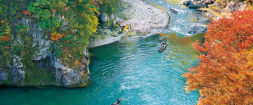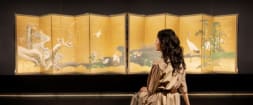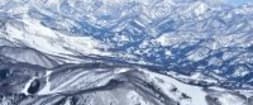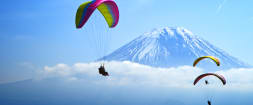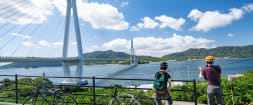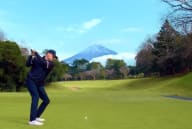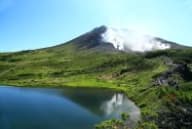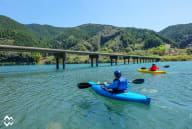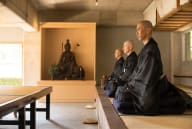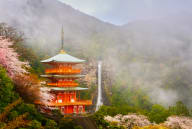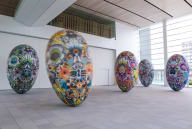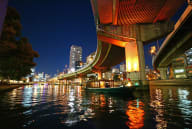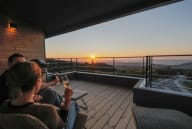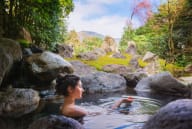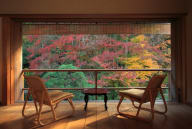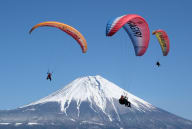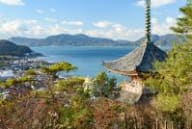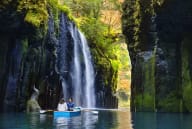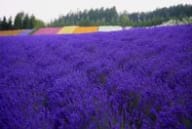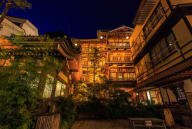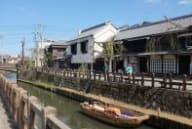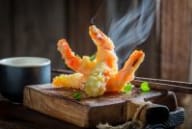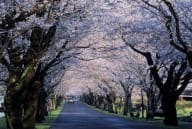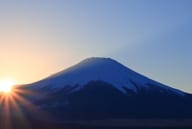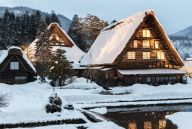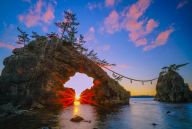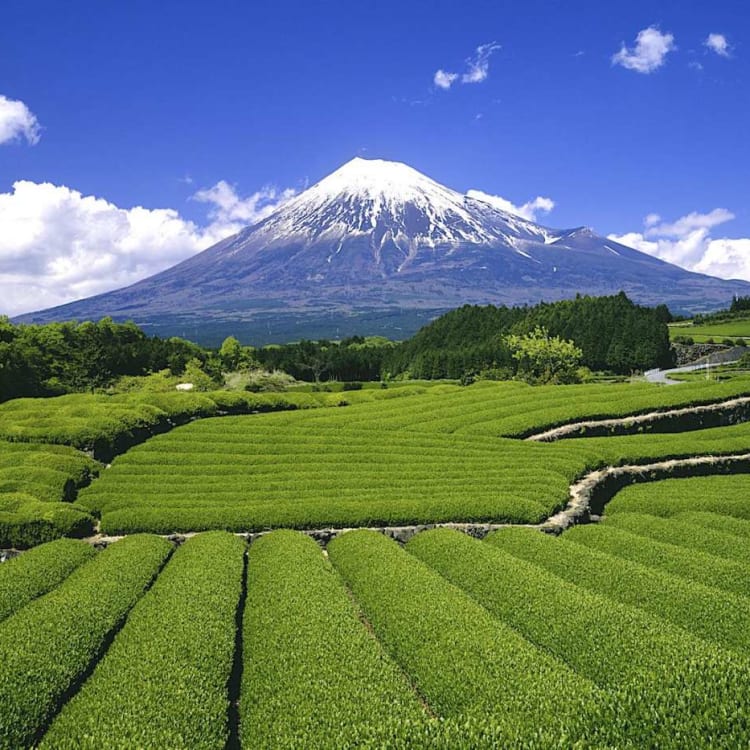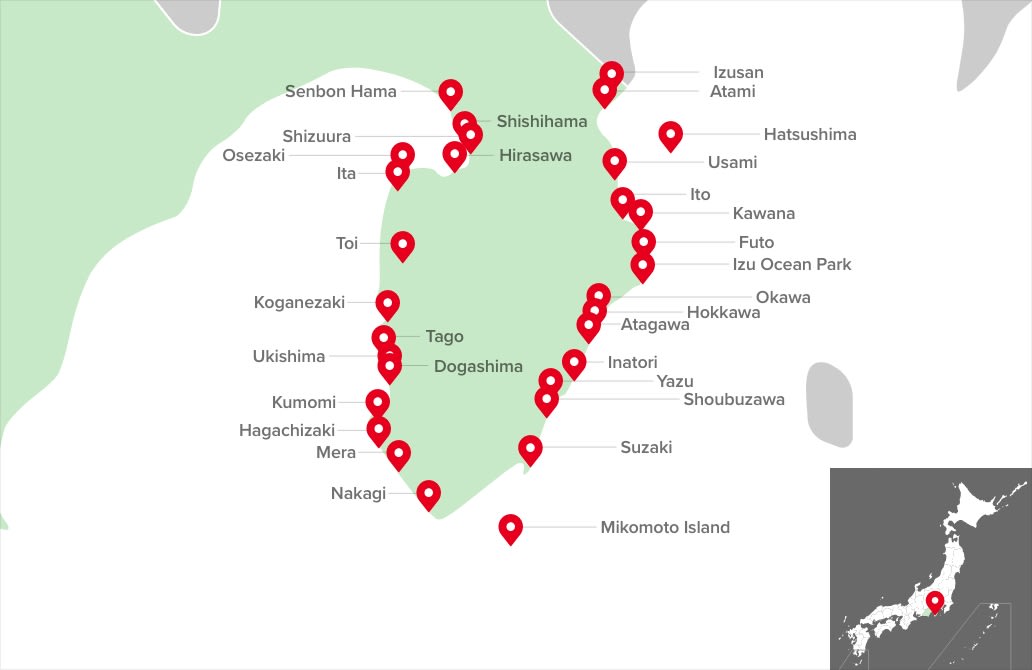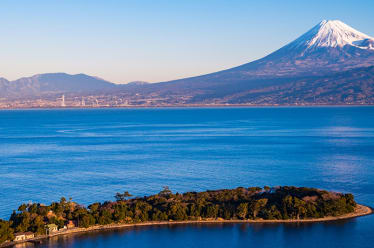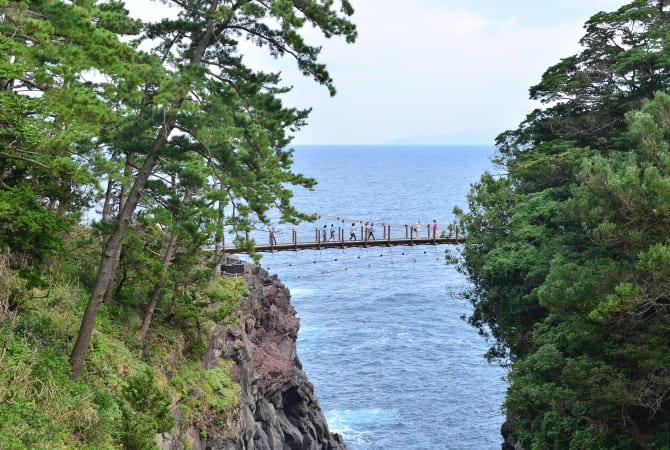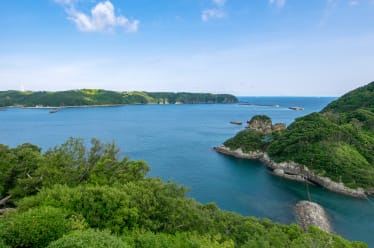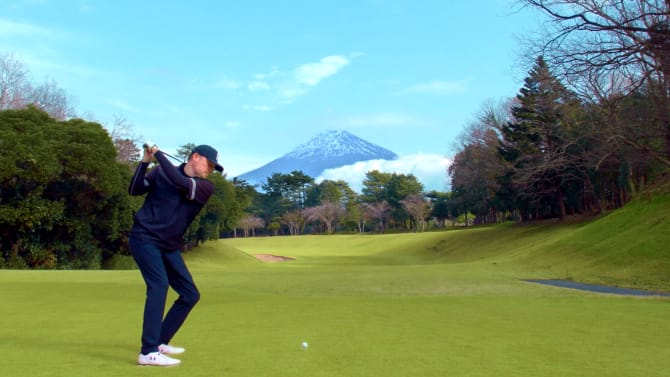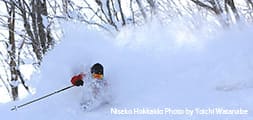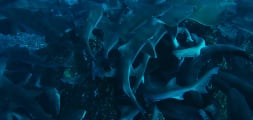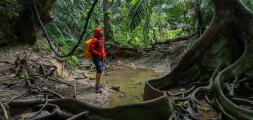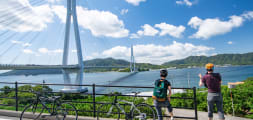Fish watching Mecca of Izu peninsula catering from beginners to experts
This diving area offers both beach and boat diving experience. The bay like beach, protected by it's geography, are often not effected by the wind and waves they may otherwise cause dive spot closures. The bay is articulary popular as you can observe the spawning of the bigfin reef squid (Sepioteuthis lessoniana) between June to August. The shallow depth(6-8m) allow you to stay and watch this magnificent site for a long time. The fleet of squids can be as large as 30-50.
It is very popular amoung Japanese divers for it's abandunce of marine life.

Underwater soft coral flower garden
Located on the east coast of the Izu penincila, Hokkawa only accepts 25 divers per day. Due to this reason, it is considered as a hidaway diving spot. Hokkawa is popular for its complex underwater geography and it's beautiful healthy soft coral gardens. Amoung th soft coral garden, you can see the Scalefin anthia(Pseudanthias squamipinnis) and chicken grunt(Parapristipoma trilineatum) in large numbers. During Autumnm if your lucky , you may get to see Yuzen(Chaetodon daedalma) a beautiful angel fish endemic to Japan.
Hokkawa is also a famous hot spa(Onsen) area. You can warm yourself after a long dive.

Fish watching paradise in the box garden like ocean
Izu Ocean Park(IOP) area's dynamic underwater terrain was formed by a volcanic magma, pouring into the ocean 4,000years ago. Due to it's complex underwater geography, the site is an ideal environment for underwater life, making IOP a very popular diving location in Izu peninsula. It is a beach point entry, set up to help divers reduce hassles during entry and exit. Also the facility on ground is also satisfactory. It has 31 shower heads, warm changing rooms and hot bath which you can jump in with your dry suits on during the cold winter season.
Although it's beach point diving area, the variety of different underwater landscapes and the depth offered, makes IOP the place to dive for all types of divers.

Enjoy the high visibility "Ita blue" ocean
Due to it's quiet natural surroundings, the small port of Ita is full of marine life. Nutrients from the mountains poures into the deep Ocean surrounding the port. The quality of the water here is proven from the reserch done for water quality. Ocean of Ita was chosen No1 quality in Shizuoka Prefecture. The deep blue waters here are called "Ita blue".

Dynamic underwater volcanic terrain
Ito has a dynamic underwater terrain like no other. The popular diving spot just 1km off the coast of Ito is 「Teishijima」. It raises up like an volcano from the past from the depth of 70m. It is full of drop offs, arches and underwater cannals.
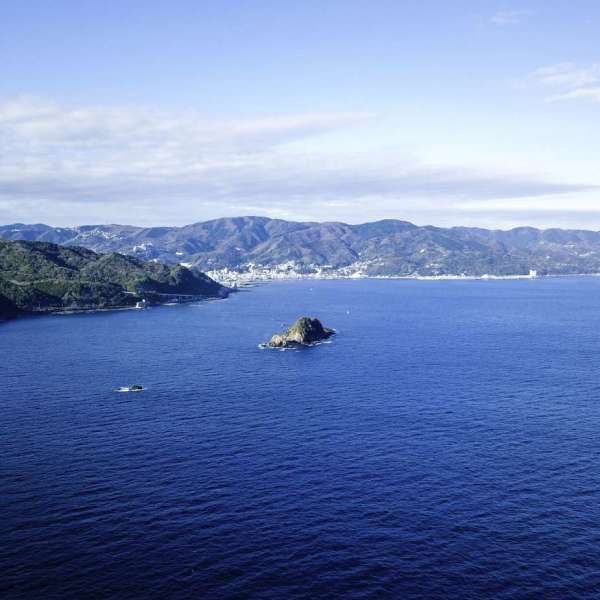
Popular for it's wide range number of fishes
Kabana is a port city surrounded by nature. 2.5 hours drive from center of Tokyo, the many diving spots offered here caters to many different types of divers. You can enjoy the tornado of Horse mackerel and school of Japanese eagle ray (Myliobatis tobiei) and variety of sharks to the nudibranch and rare gobies.
The beach dive is also popular by the novice divers.

Beautiful white sand diving spot ideal for fish watching
Beach diving at Koganezaki park beach is ideal for beginners and wash watching enthusiasts. Due to the shallow depth and the white sandy sea floor reflecting the sun, the underwater are very bright on a sunny day. You can take your time watching many macro sea creaures taht you can see on the sandy bed.
The boat diving offered ar Arari area is famous for the school of Japanese eagle ray (Myliobatis tobijei) .seen in the early month of summer. Also you can see giant japanese red sea bream (Pagrus major) all year around.

Cave diving, safe and beautiful. Full of underwater life.
Kumomi offeres fundivers an experience they will never forget. It is famous for it's underwater cave and tunnels. As you will always dive with an experience local guide, you will never be lost in the caves, but still feel the excitement. the caves are a made of large bulders piled up together so you will always have the clear visibility you need. The sun lights from the crack makes you feel like you in an underwater cathedral.
Whats so popular about Kumomi is that is is considered by nudibranch lovers as the place to visit. Near the entrance of the caves, there are wide range of nudibranch seem all year round.
The diving facilities here is another reason to visit. It offeres, hot bath you can enter with your dive wear during winter seasons and hot shawers all year round.

Drift diving in the open sea. No1. Hammerhead diving location in Japan.
During the summer month (June to October), Mikomoto Island is a unique diving location near Tokyo where you have the chance to see a large school of Hammerhead sharks up close. To dive at Mikomoto Island, you need to book youeself on a diving boat situated close to the city of Shimoda at the south tip of Izu peninsula. It can be a day trip diving destination from Tokyo, if you connect on to the right train. Due to the strong current and demanding diving conditions, many dive shops set out a rule of at least 50 tank diving expernece for the tour. SO don't forget your log book to prove your skill.

Osezaki diving Macro mecca of Japan
Beach diving area with many diving shops within the 800m cape, offering diverce diving experience from the calm inland bay to the fast current outside open sea.
As it is located on the edge of the 2500m deep Suruga Bay, depending on the wind and current situation, you may be lucky to see many types of deep sea creatures in 1 dive.
The inland bay is basically sandy, muddy sea floor, giving it an ideal environment for nudibranch to flurish. During the winter month, an nudibranch expert guide can show you over 30types of nudibranch in 1 dive. The tip of the cape is open only on weekends and public holidays but if you are certified to dive deep, you can see many different types of deep water antias, some endemic to Japan.
The outside open sea is also game for nudibrach which is different from the inland bay. Also if your really lucky, MolaMola comes up during the Winter month to it's cleaning station.
Divers here are diverse as well. You can see tech divers with their special dive gears, underwater photographers with there giant cameras and also fun divers just enjoying the beautiful underwater views.
(Diving site opening hours)
Inner Bay Point
07:00-18:00
19:00-21:00 (Night Diving : Please Inquire)
Out side
7:00-17:00
Cape(Misaki)
9:00-16:00
*Weekends and National holidays
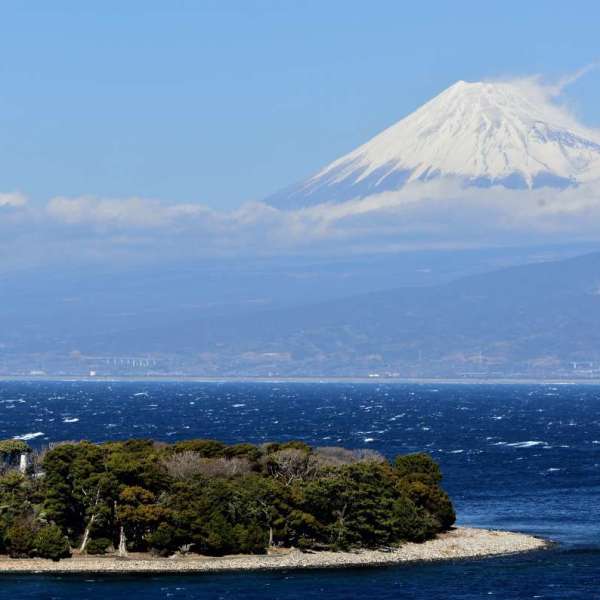
Deepwater dive station at the west coast of Izu peninsula
Located near Numazu station, it is considered to be the mecca of deep water training. It is a beach diving point but the steep slope with a guide rope to lead your way, will bring you down to the depth of 50m is a short distance. From this reason and its underwater environment(small rocks and mud), you can see wide ranges of sea creatures, ideal for fish watching divers. If your cerified to dive deep, you have a good chace of seeing the endemic cherry anthias (Sacura margaritacea).
The inland bay which the diving area is located, it is rarely closed due to weather. Night diving is possible all year round as well.

20min from the city of Numazu, this diving site opened on 2015. From this reason, the underwater environment is very preserved and well managed. You can see the beautiful corals around the area.
The underwater terrain is diverse, from sandy area to drop offs, you can enjoy different types of diving in one place.

Exciting outside Ocean and the protected inland bay offering different types of diving to all types of divers
Located in the center of the Izu peninsula on the west coast, Tago bay can satisfy all types of divers in this location alone. The outside open Ocean offers dynamic and exciting diving experience. The famous "Futone"diving spot, is a large rock reef ranging in the depth of 8m to 40m. Here you can see large school of different type of fishes all through your dive. During the winter seasons, you can see large group of the endemic deep sea cherry anthias (Sacura margaritacea) with it's beautiful mating colours.
The inland bay offeres the beautiful green rock coral(Acropora tumida) in the shallow wates.sheltering the small fishes in the bay. You can find many macro creatures such as colourful frogfishes.
Tago is also poplar amoung the divers as, because of it's geografical location, it is rarely closed. Even during the typoon season, the outside Ocean points may be closed, the inland bay can be very calm.

With it's hot spa(Onesen),Atagawa alligator park is famous among the Japanese.
For divers, if your lucky, it is a special location to see the Japanese eagle ray(Japanese eagle ray) . With natural caves and soft corals, this is the place you can relax and enjoy diving.
Wreck and cave diving at Atami Onsen(Hot spa) city
Atami has always been a favorite Onsen resort for Tokyo area for a long time. The city is filled with Onsen(Hot spa)accommodations and restaurants to satisfy your craving for delicious seafood.
Diving here, you can enjoy wreck diving, cave diving(September to December) and soft coral forests.
A beautiful saw tooth coastline with unique small Islands ,underwater caves , crevasse and arches, Dogashima offers a different kind of diving. The marine life is also diverse, with many schools of fishes, throughout the year.
Located at the wild Monkey park, Hagachizaki offers from relaxing shallow underwater caves to the exciting fast current diving points.
Photographing wild monkeys (Feeding done) is a great past time between dives.
A day trip diving Island, off the coast of Izu peninsula
Hatsushima, although only a 23min boat ride from port of Atami and Port of Ito, it is an Island that you can relax and enjoy. Away from thehustle and bustle of the city, the Island is surrounded by fast tides, the visibility are generally better than the diving area around Izu peninsula. Also you can encounter many large size schooling fishes and many sharks around this dive spot.
Although there is a diving shop on the Island, to dive here, you need to find a city dive shop with a diving trip out to this Island.
A popular beach for the local families, Hirasawa is a new diving area in the western coast of Izu peninsula. Well known for it's visibility, the diving here is relaxing. Protected from the waves and the winds, you can enjoy shallow diving. The underwater marine life is also something of a surprise. There are many nudibranch and macro marine critters in this area. Some rare to the local divers. You can also find a small patch of hard coral reef, proving it's environment to be balanced.
Both beach diving and boat diving point, many divers returns here because of it's beautiful bright white sands seafloor. Here, if your lucky, you may encounter many types of sharks and rays. Macro marine creatures such as nudibranch and seahorses are also commonly seen in these waters.
Closest diving area to Tokyo in the Shizuoka prefecture. 90min by car and 45min on the bullet train.
The soft corals colonies, like an underwater garden is very popular among the local divers.
A small fishing port famous for it's catch of the Japanese spiny lobster, the underwater terrain offering arches and caves are some of the attractive points here at Mera. Due to the Black current , Mera are abundant with tropical marine creatures through put the year.
The ocean in the national park is clear and beautiful. Very popular among the beach lovers in the Kanto region, some beaches can only be reached by boats thus making this place extra special.
For diver, all the points are just 5min away from the dock. With beautiful hard corals and many school of fishes, many divers return to this sites. If your lucky, you may encounter a school of Japanese eagle rays and even school of Mola Mola.
Restricting to just 50divers per day, Okawa offers untouched underwater nature to the visiting divers. The underwater marina creatures are abundant with large schools of fishes and Macro marine creatures.
On land, there is a park where in season, you may be able see the dragon flies in the dark.
Located close to Numazu station, a large city in Shizuoka, Senbon Hama is a beach entry dive location where you can enjoy the Macro marine life. Night diving is possible all year round with sandy and muddy bottom, offering variety of nudibranch, gobies and other creatures dwelling in the sands.
Enjoy both wreck diving and shallow beach diving at Shoubuzawa. The Wreck is a small 20m boat at 24m depth, providing shelter to the smaller fishes. You can enjoy the stress free beach diving here as the entry and the exit points are well maintained. With many marine life underwater, you can relax and take your time to enjoy the underwater experience.
Located near Shimoda Station (10min drive), Suzaki is a shallow beach entry dive site popular among the underwater photographers. During the winter month, you can find many baby Lethotremus awae. You can take your time and get your perfect shots. The marine life are abundant all through the year, as if your lucky , you might be able to see school of seahorses, a rare site for any divers.
Popular among the local divers for the wreck and dynamic underwater terrain. There is a beach entry point here but the recommendation is the boat diving points. Enjoy the colorful soft corals.
A geodiving area where you can see the remains of the ancient underwater volcano. Ukijima is also famous for it's variety of nudibranch seen in the area. Nudibranch lovers from all over visit here to look for rare specimens. Both beach and boat diving area wit underwater arches, caves and sandy bottom.
You can enjoy both beach diving and boat diving at Usami. The underwater idol here is the Japanese bullhead shark(Heterodontus japonicus) at the beach point, where it is frequently seen. The macro marine creatures are abundant as well.
Whether you like drift diving or Macro fish watching diving, Usami has it all.
This diving site opened in 2010, relatively a new diving spot for Japan, the underwater nature are still beautiful and in tacked. You can enjoy drift diving by boat and macro diving from the beach.











